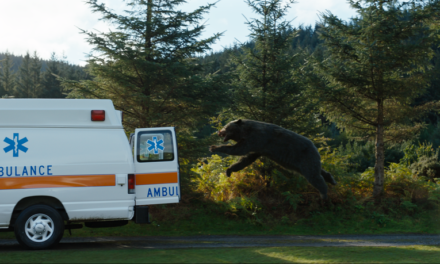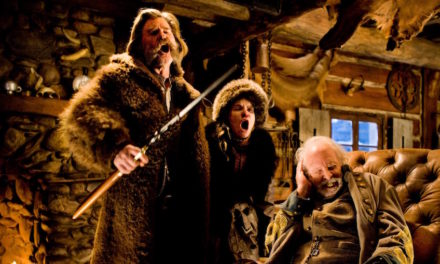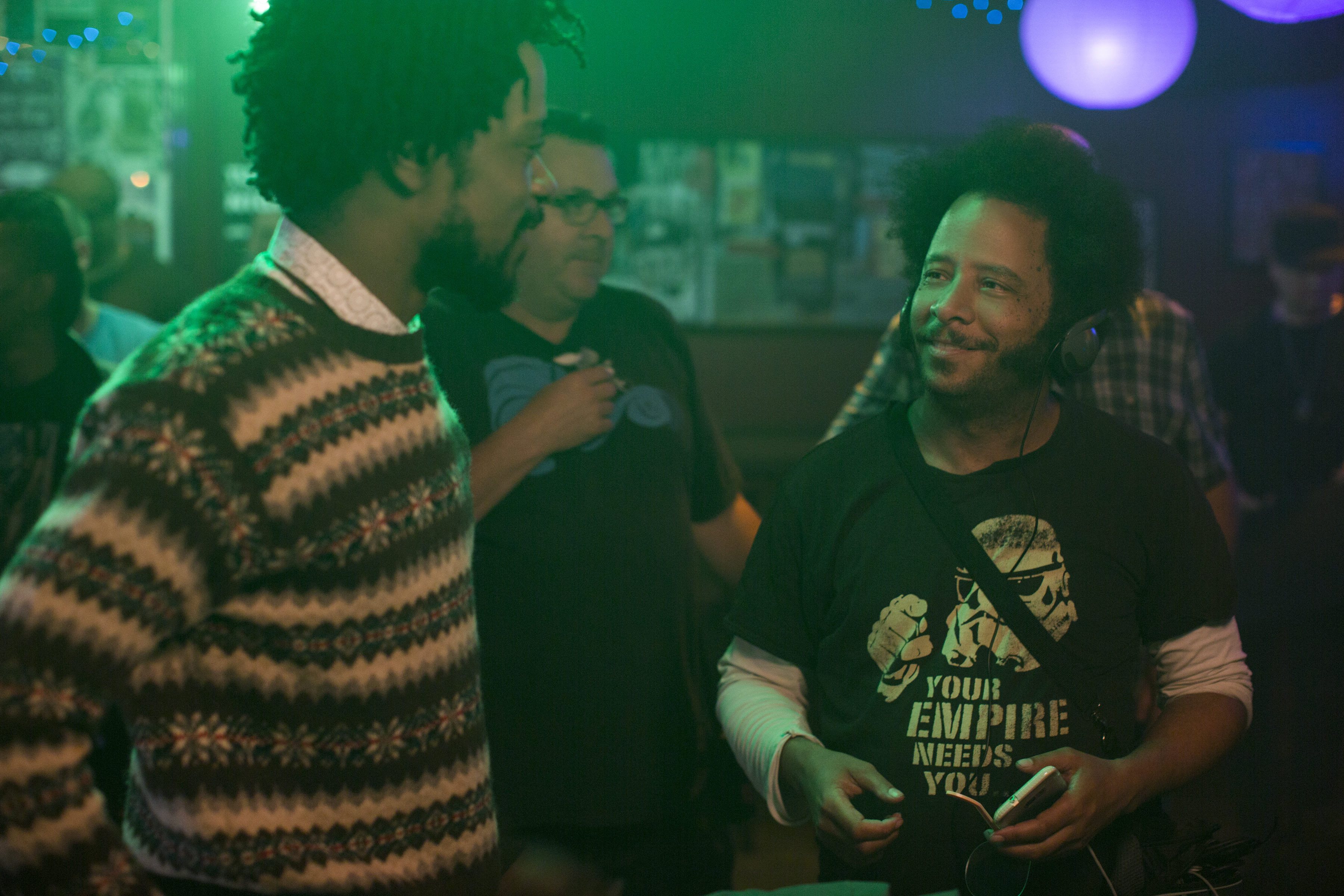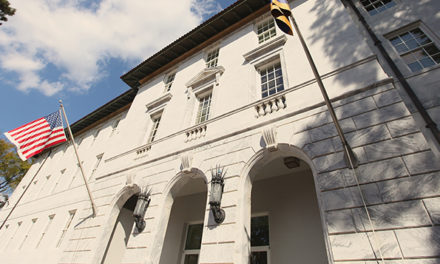Ever since her performance in the 2009 film An Education wowed audiences and earned her an Academy Award nomination for Best Actress, Carey Mulligan has been one of Hollywood’s most graceful and deeply relatable actresses. Through performances in films like Never Let Me Go, Drive and Inside Llewyn Davis, Mulligan has commanded a powerful screen presence despite her relatively young career.
She brings that emotional relatability to Focus Features’ new film, Suffragette. Mulligan plays Maud Watts, a young woman in early 20th century London thrust into the fight for voting rights and the battle for equality — something that comes at the cost of everything she’s known.
I had the opportunity to sit down and speak with Mulligan in a conference call with college students from around the country. Mulligan talked about her character process, the importance of telling the story of women’s suffrage and more.
Allison Mifaset, Lynn University: It takes a lot of courage for [Watts, Mulligan’s character] to become so invested in the suffragette movement considering she goes from a housewife to a rebel. What was it like [portraying] that part of her?
Carey Mulligan: That was the challenge of the film to me and [what] I was most excited about in taking the role on — because she starts the film as such an ordinary woman. And it’s through this journey, through meeting these women that she becomes extraordinary. I really wanted to try and make that feel real and believable.
And it’s a really big shift that she makes in a lot of her personality. That was sort of the hardest thing about it. But it was based on accounts of lots of women at that time. And I think it was something that happened to a lot of working class women, especially. They have the most to lose, and they made the biggest sacrifices. People reached a breaking point in their lives and it was at this time that a lot of these women realized that they needed to fight for this cause and they didn’t have a choice anymore in their lives. I read a lot really, a lot of accounts of women who were like [Maud] and they all [fed] into the character.
Robert Lira, University of Houston: With such a strong ensemble of women in this film such as Meryl Streep, Helena Bonham Carter and yourself, what kind of discussions did you have about how you were going to convey [your camaraderie] to the audience?
CM: Well, [we] had a couple of weeks before we started [the] filming of being together and spending time [together]. And I think it was most important for my character and Helena’s character and Anne-Marie’s [Duff] character to really have that camaraderie on screen. And we just got on so well.
It was interesting because it was the first time, really, in history in England that the classes — we’re a very classist society in England — really mixed. And upper class women started talking to the middle class and lower class women and sharing ideas. I think that was something that Sarah certainly wanted to show in the film. Helena’s character is educated and has money and she is spending time with Maud who is not really educated and is from a very different class.That was a big part of the movement.
Jacqueline Merico, American University: How do you feel the film would have been different had the director been a man?
CM: Oh, that’s a good question. Well, I can’t really say that the experience was one way or another because it was directed by a woman.
I do feel that as a group of women, we felt very excited to be the ones who are finally going to get to tell the story because it’s such a huge part of our history that’s been so neglected. And so to get to be the ones to [tell the story], we felt very excited and inspired by that.
And, honestly, I don’t think it would have been made by a man. I think it was always going to take this group of really tenacious women to get it made. And the experience is so unique; and it shouldn’t be a unique experience for a large group of women, but it was. And Sarah just led it all in the most brilliant, thoughtful way. It was such a wonderful experience and one of the most exciting films I’ve been a part of.
Brandon Wagner, Emory University: In telling the history of a group of women who haven’t necessarily had their story told, what did you want your performance to say about them?
CM: I think that it is sort of a tribute to them; we wanted to show that courage and that conviction.
This is largely a lot of women who had everything to lose. At that time, to make that choice to be a Suffragette was incredibly dangerous and risky and could ruin you. And they stood behind it and endured everything that you see in the film and more because they felt so strongly that they needed to do this — not really for themselves but for their future, for the future generations.
I think that kind of conviction for their beliefs and doing things for the betterment of society was completely unselfish. The change that would be [made] wasn’t really going to affect their lives. But they knew that it would affect the lives of future generations.
Natasha Nescarinas, Boston University: [How did it feel to have] had the opportunity to delve into the inspirational and raw story and just basically embody the movement, especially when it’s something that’s not truly talked about on a day-to-day basis?
CM: Part of the excitement for me was that I got to really dive into the research for this role. My character was based on lots of accounts of real women. And to get to read these letters and prison diaries written by these women, and to read accounts of what their working lives were like and the testimonies they gave in Parliament — it’s just amazing.
So, it felt really kind of exciting to delve in and discover all of that and bring it into the story and into my character. And [Maud’s] just a very real representation of what it was like for women back then and how lots of people were inspired by the movement. So I wanted to get that right.
It was almost frustrating to not be able to get more in there because there was so much that we found so inspiring, [along with] brilliant quotes by [the] Suffragettes — things that people had said, and experiences that women had had. And we just wanted to pour all of it into the film. But there obviously is a limit to how much you can do [in a 2-hour] film. It was kind of amazing, a privilege to get to read all of that stuff.
Colleen Nielsen, UC San Diego: In what specific ways [do you think] that recounting this political movement through Maud’s experiences may have impacted the portrayal of the movement’s scope?
CM: Well, I think you’re seeing a very specific story line within the suffragette movement.
We’re talking about the militant suffragettes. There were other factions of the suffragette movement that were actually anti-Emmeline Pankhurst and her techniques. So I think you’re seeing a snapshot of history. But I think it’s a really important snapshot.
We’re just showing one specific side of it. And the side that’s probably the least discussed, especially in England. [This is about] acts of civil disobedience and the bombings and the imprisonments, all the stuff that we kind of wanted to write out of our history books in England. That’s the side that we really wanted to show. And I think it’s important that people read around and read about all the actions of the women around that time. And read about the impact that the war has on women’s suffrage because [it] definitely was a contributing factor. So many women in England got behind the war effort, [so many] were so heavily involved that that was another contributing factor to women getting the vote.
Hunter Human, University of North Carolina: As an actress, what was it like being able to shoot inside the actual houses of Parliament, being part of [the first group] who’ve ever been able to say that they could do that?
CM: It was amazing. It was a massive, massive privilege. And we were really recreating history. So to get to the riot that happened outside the House of Parliament was a real event called Black Friday. And the suffragettes marched to the House of Parliament to petition for the vote and they came under attack, really, from the police.
To recreate that outside of the House of Parliament next to Big Ben was really amazing. And everything that we shot inside — we walked past the statue that they famously chained themselves to. And actually at the time that they were shooting, they had in frame inside the House of Parliament the [scarf] that Emily Wilding Davison was using at the derby when she was killed. And they have that. And it’s framed behind closed doors. And we were taken to go and see it. And that was really, really special and very moving to get to see that in real life. So the whole experience is just so wonderful. And we were there.
Kiera Fellows, Southern Methodist University: What do you think about this movie makes it so relevant at today’s culture?
CM: I think there are lots of things that make it relevant today. I think it’s really great. We’re a kind of generation of apathetic voter[s], but this film is a reminder to people for when they use their votes what was done for them to have it. And I think certainly for me it made me think about what my vote really meant.
So I think in that respect, it’s really relevant. But I think also there’s lots of issues in the film that are relevant and issues that are facing women still today 100 years later that really haven’t been resolved. We’ve been talking with the film a lot about where women are today.
We still have 62 million girls who are denied an education. And that’s so very Edwardian and very outdated. It’s a really sad fact of today. And one in three women in the world will experience sexual violence. And all of these themes are in the film.
But it’s a reminder that we’re looking at a historical drama, something that seems like it was very long ago. However, a lot of these things we still have to work on. So that’s been a really great part to making the film. And also the idea that this film can inspire people to take action.
We had a really great protest in London by a group called (Sisters Uncut); we were protesting cuts to domestic violence (care) in England. And they stormed the red carpet and lay down and threw smoke bombs in the suffragette colors. And used the film as collateral to do about something that they believed in. I think that just reminds us how relevant this film was and how much people could feel inspired by it today. So it’s always felt very current. We never wanted this to feel like a sort of old costume drama; we always wanted it to feel very present.
Noe Dominick, Emerson College: Have you been able to pull from other characters and other roles you’ve done to create Maud? Or was it actually different?
CM: She was pretty much unique from most of the other roles I’ve ever played. What I loved about her and what excited [me is being able to tackle] new challenges. And she certainly didn’t remind me of any of the other characters so far I’ve played. So I was excited about that.
She was based on a lot of real women. And it was really reading about their lives that formed the character for me. There was one girl, Hannah Letstone, who I really focused in on who was a Suffragette [with] a very similar story to Maud‘s. She essentially started off life very poor and married very young, had a lot of the similar background to Maud. She came across the Suffragettes, and they sparked something in her. And she just took on this completely different life. And I always felt very close in her nature to this character. So that was a really helpful source to me.
Leila Eidaman, Drexel University: This film focuses on average working class women rather than a historical figure in the movement. Why do you think that is?
CM: Originally, I think when the conversation first started, Abi Morgan, the screenwriter, [had] an idea to write a biopic of Emmeline Pankhurst (Meryl Streep’s character). And I think through working on the film together, everyone felt that it was more accessible and perhaps more interesting to look at the movement through the eyes of a foot soldier and through someone who really was at the bottom of the ladder, and in a way had the most to lose. So I think that was the decision that was made.
Sometimes the risk with costume dramas is that you look at characters up on the screen, you have very, very dutifully dressed and tight corsets and buttoned up with the usual hats. And you feel sort of distant from those characters and you find it harder to relate. So by carrying the story through Maud who dressed much more shabbily and much more informally and lived a more recognizable lifestyle, albeit incredibly poor, but slightly more relatable in a modern sense, I suppose, than carriages and horses and bonnets. I think to tell the story through her eyes is the way to make the audience feel more included in the story.
Opinion Editor | Brandon Wagner is a College Senior from God Only Knows Where, America studying Film and Media Studies with a minor in Religion. This is his first year for the Wheel, in a likely misguided experiment to be a film critic. When he's not writing on the biggest blockbusters or the films of Spike Jonze or Andrei Tarkovsky or Zack Snyder, he's writing on comedic television, the future of gaming as an art, or the relationship between audience and cinematic experience. In other words, Brandon Wagner has basically nothing else going on but this.






